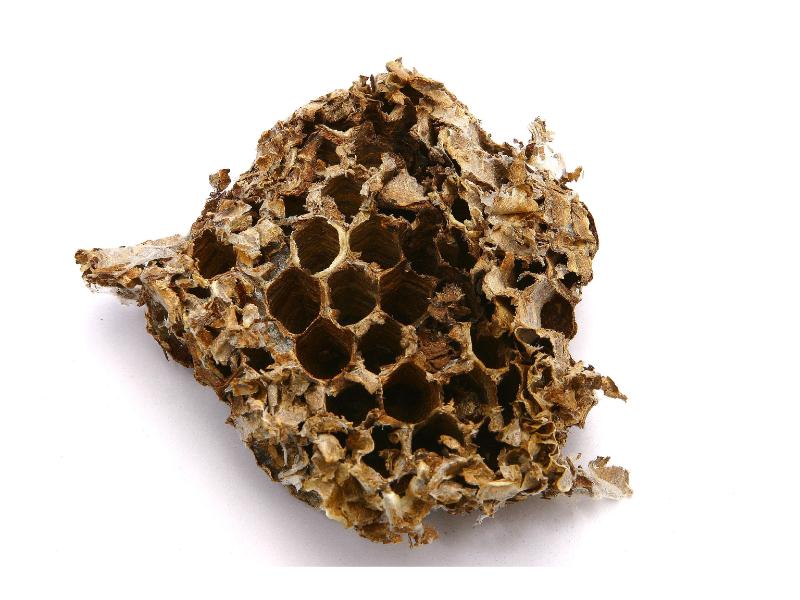Search in medicinals
Vespae Nidus
Hornet’s nest
蜂房 〔蜂房〕 fēng fáng

Alternate Chinese names: 蜂肠 fēng cháng; 大黄蜂窠 dà huáng fēng kē; 革蜂窠 gé fēng kē; 蜂房 fēng fáng; 露蜂房 lù fēng fáng
Kingdom: Animal
Origin in PRC Pharmacopoeia: Polistes olivaceus DeGeer; Polistes japonicus Saussure; Parapolybia varia Fabricius. (PRC Pharmacopoeia)
Origin in unofficial sources: Polistes olivaceus DeGeer*; Polistes japonicus Saussure*; Parapolybia varia Fabricius*; Polistes mandarinus Saussure
Use: Medicinal
Category: External-use agents / Toxin-attacking, worm-killing, and itch-relieving agents
Properties: Sweet; balanced; toxic. (Some sources list acrid and warm instead.)
Channel entry: Stomach channels. (some sources add liver channel.)
Actions and indications:
- Attacks toxin and kills worms: Flat- and welling-abscesses; scrofula; scabies; tinea capitis.
- Dispels wind and relieves pain: Wind-damp impediment (bì) pain; itchy dormant papules (urticaria); toothache.
- Fēng fáng can both dispel wind to relieve pain as well as dispel wind to relieve itching.
- Additional uses: Fēng fáng has recently been used for malignant tumors, often in combination with Quán xiē (全蝎 Scorpio , scorpion), Jiāng cán (僵蚕 Bombyx Batryticatus , silkworm), and é zhú (莪朮 Curcumae Rhizoma, curcuma rhizome).
Dosage and method: Topical: often used externally as a powder mixed with oil or decocted for use as a wash or a mouthwash. Oral: 6–12g in decoctions.
Warnings: Unsuitable in patterns of
Quality: Nests the size of a fists that have flexible papery out crusts and small and that have no plant matter attached are best.
Production area: Southern China.
Back to search result Previous Next